Could this Indian startup be the next Salesforce?
How Pepper Content is harnessing the power of the creator economy, market networks, and generative AI to tackle a core business problem faced by every company in the world - the need for good content
Hey folks👋
Firstly, a very happy new-ish year to you all!
A warm welcome to the 624 new Tigerfeathers subscribers who’ve joined since our last piece.
If you conducted an official Tigerfeathers census today, we’d have a larger population than that of several Polynesian islands put together. Click here for an easy path to citizenship👇
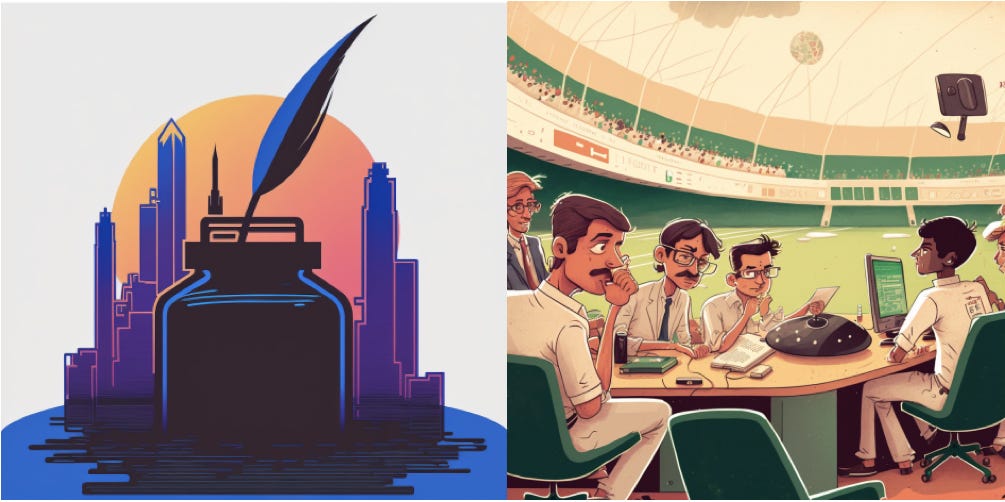
“There are two kinds of companies in the world - those that use Pepper Content and those that will use Pepper Content”
Friends, we have a confession to make.
It’s possible that we’ve done a poor job of disguising our excitement about the company being built by the protagonists of this piece.
To be fair, it’s not every day you find an Indian startup that counts as its customers:
- 80% of all unicorn startups in the country
- 7 of the 10 biggest banks in the country
- every major news corporation in the country
- several Ivy League universities in the US
- many of the biggest public companies in the US
- more than 2500 of the most recognisable brands around the world
…and they’re doing it by taking aim at the emerging discipline of content marketing, hoping to become globally synonymous with a core business function similar to how Salesforce became forever entangled with the function of sales almost 25 years ago.
So perhaps our excitement is warranted.
But first, another confession.
This wasn’t an essay that we actually planned to write.
When we first made the pilgrimage to the offices of Pepper Content in Mumbai late last year, our objective was a little different. We originally wanted to cover the story of Pepper as part of a broader piece about Indian startups that were innovating in the domain of Artificial Intelligence (AI).

You see, Pepper had launched their own AI-powered writing tool called Peppertype.ai in early 2021. As tech nerds and wannabe writers, we’d enjoyed playing around with Peppertype and exploring how it could make our lives easier. The company seemed well positioned to capitalise on a trend that was heating up…
…because much like Suryakumar Yadav in 2022, AI is having a moment.
It feels like every week there’s a groundbreaking new development in AI that is equal parts astounding and unsettling. The news cycle has been dominated by the launches of glitzy new AI products like DALL-E 2, ChatGPT, Midjourney, Stable Diffusion, and others that have given ordinary people creative superpowers. Millions of users around the world are experimenting with these tools to make selfies, write code, do their homework, design their apartments, generate marketing collateral, and largely to let their imaginations run wild.
The arrival of sophisticated large language models (LLMs) that can comprehend human text has shattered our prior understanding of what a computer is capable of doing. That’s what makes this iteration of the AI hype cycle so intriguing. The suite of new tools that was released last year encroached on a domain that was conventionally assumed to be off-limits to automation - i.e. human creativity.
AI in 2022 often felt like a half-baked sequel to Space Jam, where computers suddenly acquired ‘human’ skills like writing, coding, drawing, painting, directing, designing and illustrating. It may seem hyperbolic if you haven’t played around with these applications yourself, but many of the recent developments in AI seem almost indistinguishable from magic.
And Pepper is in the magic business too. They were one of the first Indian startups to build a product on top of GPT-3, the advanced LLM powering applications like DALL-E 2 and ChatGPT.
Wait, so why did you change the focus of your article?
Because after spending time speaking with the team and playing with their product, it began to dawn on us that Pepper might be a special company. The kind of company that comes along and changes the game, not just in India but the world over.
And those sorts of companies are rare, interesting, and usually worth a closer look. Most of the time, these companies are built by incredible entrepreneurs who force you to re-examine your biases and limiting beliefs.
This is certainly true of Pepper and its team. The CEO of the company, Anirudh Singla, openly talks about his dream of one day hosting a Pepper Content shareholder meeting in the famous Wankhede Cricket Stadium. There is no shortage of belief here.

But belief and ambition alone aren’t enough to build a great company. You need talent, grit, killer instinct, and a lot of luck along the way too. And it seems like Pepper has all of those things and more, as evinced by their fascinating origin story, glittering cap table, formidable team strength, and stellar customer traction (more on all this in a moment).
They have also enjoyed their fair share of luck too, and the team will be the first ones to tell you that they have benefited from being in the right place at the right time to capture the tailwinds of the gig economy boom, the Covid-propelled shift to remote work, and the current wave of excitement about generative AI.
All in all, it feels like the stars are aligning and something big is happening here. These guys aren’t playing it safe, they’re trying to knock the ball clean out of the park. Just like their idols Salesforce built a $300bn titan by modernising the core global business function of sales, Pepper Content wishes to fashion its own towering destiny by modernising the core global business function of content. And as crazy as it might sound, we wouldn’t bet against them doing just that.
For those reasons, we decided to change tack and abandon our AI-centred essay to instead focus on doing justice to the saga of Pepper Content.

Cool! So tell us more about Pepper
Well, their genesis traces back to 2017 when co-founders Anirudh Singla and Rishabh Shekhar were still teenagers in their second year of college at BITS Pilani. An epic quest to solve a personal conundrum would kick off a years-long pursuit to build the world’s largest marketplace for content creators. Their goal is to connect enterprises and brands with freelancers from around the world to solve any kind of content marketing requirement.
Pepper’s unique approach to building their marketplace (more on this later) means that today they resemble a quasi talent agency for the best content creators in the world. Almost like a cross between Uber and the Ghostbusters (but for content).
Unlike other freelance platforms that take a more generalised and laissez-faire approach, Pepper has built a ‘managed’ marketplace that delivers deep value in the domain of content marketing through a combination of specialists and software.
This value mainly stems from their flagship product, which they call the CMP or Content Marketing Platform (another deliberate nod to Salesforce’s pioneering CRM system). It is a full-stack content management solution infused with the magic of AI, and Pepper is betting that it will become the apex product of its kind for companies and independent creators everywhere.


Anirudh believes that “every company is a content company”. His company’s operating philosophy is that in the modern business landscape, ‘Content’ is an indispensable instrument of leverage, as crucial to the success of any commercial enterprise as Sales.
Six years into their startup journey, this thesis seems to be playing out as well as they could have hoped. Pepper has worked with over 2500 of the largest companies from around the world, including Amazon, Uber, Spotify, Google, and Disney. They’ve generated 50 Cr ($7m) in earnings for creators on their platform, and their Peppertype product has been used by over 400k users in 160 different countries. Along the way, they’ve raised ~$20m in funding from stellar names such as Bessemer Venture Partners, Lightspeed India, Tanglin VP, Titan Capital, Ritesh Agarwal (founder, OYO), Kunal Shah (founder, CRED), Ankur Nagpal (founder, Teachable), Balaji Srinivasan (famous futurist, entrepreneur, and Tigerfeathers fan), and several other luminaries.
And the most exciting part of all is that it looks like the company is just getting started. They grew 16x in revenue last year and will generate $15-20m in annual revenue this coming financial year if all goes to plan. After establishing a foothold at home, they now have their sights set on conquering markets far beyond India’s shores.
Naturally, Pepper was the perfect candidate to feature in the second edition of our Globetrotters series where we spotlight the work of startups that are building ‘from India for the world’. You’re going to hear a lot more about them over the next few years, so you may as well start here.
Today’s piece will cover:
- the Pepper journey so far
- a spotlight on CMP and the evolution of their product roadmap
- the importance of their mission (i.e. why ‘every company is a content company’)
- what makes them special
Ok, so how did we get here?
Pepper Content has two cofounders: Anirudh Singla (CEO) and Rishabh Shekhar (COO). The company was Anirudh’s brainchild, and the story of how the company was born and got started is closely tied to Anirudh’s personal story. And it’s certainly a fascinating one, so strap in.
Anirudh’s tale begins in Delhi, the city he grew up in with his mother and father. Mr. Singla senior was an entrepreneur himself, and his career choice seems to have rubbed off on young Anirudh. Whereas his childhood peers wanted to be doctors and engineers, Anirudh always wanted to take after his father and become an entrepreneur.
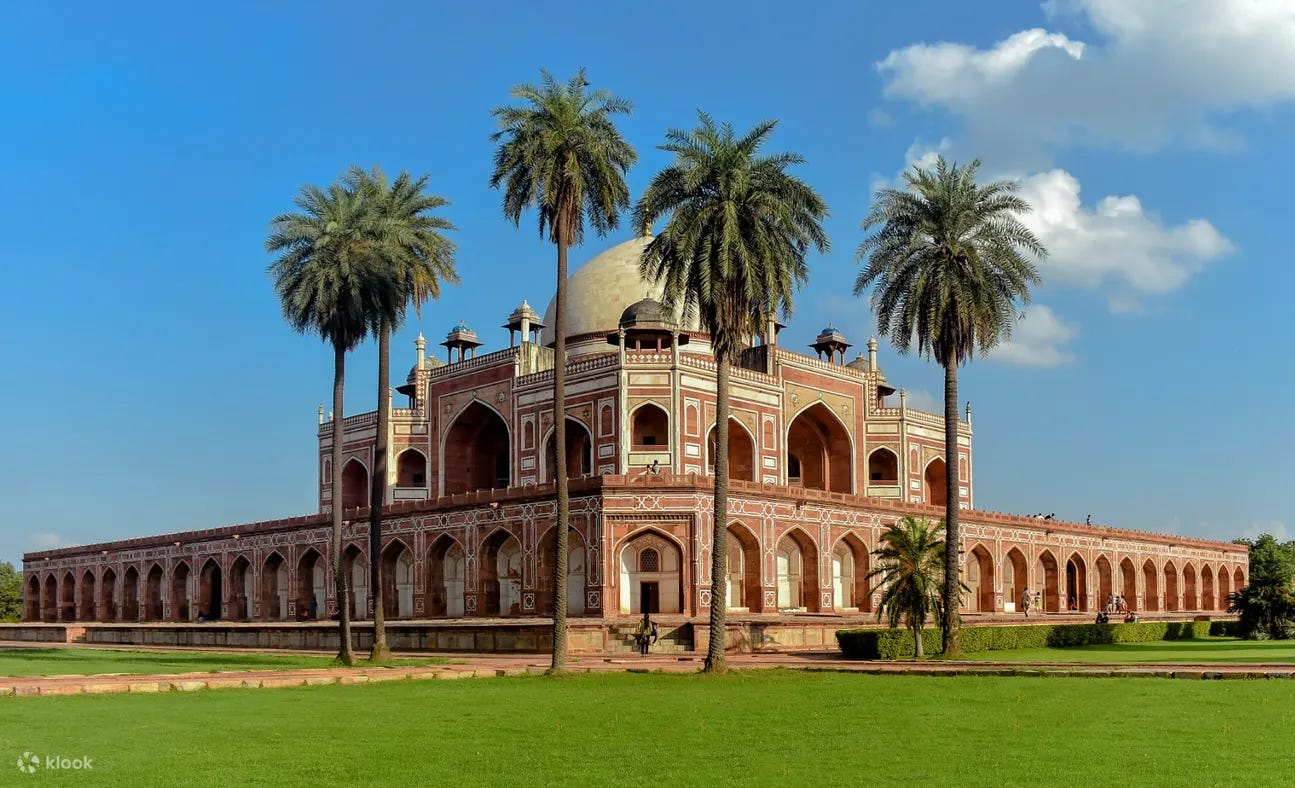
It was perhaps for this reason that Anirudh constantly strove to test himself and push his limits. One of the most consequential instances of this habit occurred after Anirudh’s first year of college at BITS Pilani. Speaking about how it felt to move to the elite environs of one of India’s top colleges, Anirudh recounts that he felt taken aback being surrounded by ‘900 other students who were just as smart or smarter than him’. He wanted to stand out and push himself, so he decided after his first year of college that henceforth, he would find a way to pay his own way through college.
That is a daring feat for an 18 year old to aspire to, especially an 18 year old attending one of the premier schools in the country with a semesterly fee of INR 2.5L ($3K). But if you were to choose only one adjective to describe Anirudh, daring would fit the bill pretty well.
So he set a goal that during his two month summer holiday, he would find a way to come up with the fees to pay for his next semester at BITS. With no real plan of how to achieve this goal, he turned to his skills and interests - writing. Anirudh had always been a voracious reader, so it seemed like a natural decision for him to try and monetise his penchant for words and literature.

At first, Anirudh reached out to all of the traditional media houses of India such as The Hindu, the Indian Express, and the Times of India Group. However, he didn’t get a single reply from any of these large players, so he turned his attention to one of the new age media companies focusing on India’s emerging tech and startup ecosystem - YourStory.
Anirudh found the email addresses of the top YourStory executives and emailed them every day for weeks without a response. Three weeks later he finally received a reply from an exasperated Shradha Sharma (the CEO) inviting him to come to Bangalore for an interview.
Long story short, he got an internship at YourStory for his 2 month summer break. Now he just had to find a way to support himself in a new city (Bangalore), and still earn the 2.5L he had set his sights on. His plan to achieve this was to take up writing assignments on US-based gig work platforms like Upwork and Fiverr. To his surprise, he found that there was a huge number of unfulfilled content writing jobs on these platforms, ranging from branded copywriting to graduate-level homework assignments.
Anirudh threw himself into these tasks with vigour, often working 18 hours a day as he moonlighted his way through his YourStory internship while working as a freelance writer on the side.
After loads of caffeine, fun, learning, and sleep debt, Anirudh finally managed to achieve his goal of earning 2.5L in two months. A formidable achievement whichever way you look at it, especially when you consider that annualising that figure would place the teenager in the top 0.1% of earners in the whole country (according to TOI income calculator). He was finally able to start paying his own way through college, but there was one catch.
The catch was that Anirudh was no longer content with simply earning 2.5L. He had elevated his ambitions. After seeing the insatiable demand for good content writers, Singla realised the size of the opportunity in front of him - if he was able to earn such a massive salary as an 18 year old, surely there must be hundreds of thousands of other Indians who would be capable and desirous of doing the same (“India had talent, but no talent marketplace”). After idolising his businessman father his whole life, Anirudh had decided the time had come for him to become an entrepreneur himself.
This was when Pepper Content was officially born - in a door room in BITS Pilani in 2017. Anirudh’s first course of action as the founder was to recruit his best friend and classmate Rishabh Shekhar as his cofounder and COO. In Rishabh’s own words, Anirudh’s plan to launch a content marketing startup in the second year of college sounded crazy, but he “let himself be convinced” nonetheless. What a decision that would turn out to be.
Next, the boys recruited a few of their BITS classmates to serve in their core circle - namely Himanshu Goyal (now Head of Product), Kishan P (Head of Business), and Aadesh Chandra (Tech Lead). This rounded out Pepper’s Founding Team.
The group started out by fulfilling online postings for content writing. Anirudh’s experience as a freelancer had taught him where to look. A particularly rich source of demand was Facebook, where there were hundreds of business groups filled with Indian SMEs requesting content writing services. Pepper chose to focus on these users because they wanted to build up a portfolio and track record of serving Indian customers.
Pepper’s first business undertaking was to bid for a project to write 250 product descriptions for specialty auto parts. Their business plan was simple - they would bid on the project at a price of 75 paise per word ($0.008), and then recruit a copywriter who they would pay around 45 paise per word, pocketing the 30 paise spread. Easy peasy. This plan went awry however, when the client completely ghosted them after striking a verbal agreement.
When the client finally resurfaced, they said they were only willing to proceed at a price of 15 paise. At this new price, there was no copywriter who would take up the job, so the boys had only one option - to write all the content themselves.

So once again Anirudh and his team found themselves staying up all night (in the middle of college exams no less) in order to complete a writing assignment for a client before the deadline. And once again, the team got it done. They had completed their first major assignment, and proved to themselves and to their target audience that they had the quality and dependability to deliver market-ready content at scale. They had their first big score of Rs. 16500 (~$205).
“What makes our journey special is that from the very first project we ever did our business has always generated revenue, and that remains a matter of pride.”
From this point onwards, jobs kept flying through the door. They repeated their trick of tapping into Facebook groups to find leads for new projects. They were also savvy enough to scour these groups for would-be content writers who were looking for work. At the same time, they began cold emailing marketing leads on LinkedIn (“we sent out 100 cold emails everyday”) and replying to job requests for content marketers on Naukri.com, building up a steady pipeline of work. Without realising it, they were suddenly at the centre of a crude two-sided marketplace, matching the demand and supply of content writers online.
To cope with the rapid scaling of their operation, the team realised it was time to avail the assistance of technology (especially given the fact that they had been managing their entire enterprise so far off a humble Excel sheet). So they launched the Pepper Content Marketplace - the early precursor to what would eventually become the CMP. Around this time, Pepper Content raised its first round of funding from a cohort of investors led by Titan Capital. This cohort even included YourStory itself, with life coming full circle for Anirudh.
Fresh off their first fundraise, the Pepper team flew out of the blocks in 2020, causing a huge stir as they snatched deal after deal away from the established creative agencies in Mumbai. By the time the team was in their final year of college, they had already generated almost 4Cr in revenue, with no signs of slowing down. As they grew their footprint and P&L, they started to receive a barrage of incoming VC interest.
In October 2020, they ended up signing a $4.2m term sheet with Dev Khare of Lightspeed Ventures (and a contingent of marquee angel investors) while they were in the midst of their 4th year final exams. Clearly, something trifling like college wasn’t going to stop them.
What came next was:
- more customers including Adani Group, CRED, Indigo Airlines, Adobe, Amazon, Facebook, and other famous logos
- pedigreed team members including Harshit Vyas (former COO and billion dollar P&L owner at OYO), Rohit Agarwal (former Head of Product for Freshworks), among others
- more funding (a $14.3m fundraise led by Bessemer VP with participation from Tanglin Ventures, Lightspeed India, and Titan Capital)
- more product features, culminating with the impending launch of the aforementioned CMP…
…Speaking of which, it would be nice to get the lowdown on what they’ve actually built.
Fair point, but before diving into the CMP product and what it does, it is important to spend a moment discussing the people the CMP relies on and empowers - the individual human creators using it. After all, a content marketplace can only be as good as the content creators who comprise it. On this front, Pepper distinguishes itself from its competition through a philosophy of only recruiting the “top tier of creative talent”.
Applicants to Pepper’s marketplace are put through a very rigorous signup process which tests their reading comprehension, grammar, sentence construction, vocabulary, marketing know-how, and research skills. The test is consciously designed to be long and tedious, so only applicants with high-intent and a true desire to work can make it through to the end. Pepper only works with the crème de la crème, which translates to the top 3% of creators out of hundreds of thousands of applicants. As part of our research for this article, we actually went through the application process but gave up after about two hours 😅

Anyway, once the talent makes it through the signup process, the CMP matches them with jobs from Pepper customers based on their skills, proficiency, and interests. They can then set about working on these tasks with the assistance of the PepperDocs text editor.
Think of PepperDocs like GoogleDocs, except each document has complete context of the brief written by the customer. And it comes supercharged with the help of AI. Its like if Microsoft Word took the pill from Limitless. This means that the PepperDocs interface gives creators suggestions on the substance, structure, and direction of their work - all based on the goals and subject matter set out by the customer.
Depending on the nature of the work, PepperDocs helps the creators achieve targets such as word count and keyword repetition. It also provides the creator feedback with respect to the readability, originality, and factual accuracy of their work.
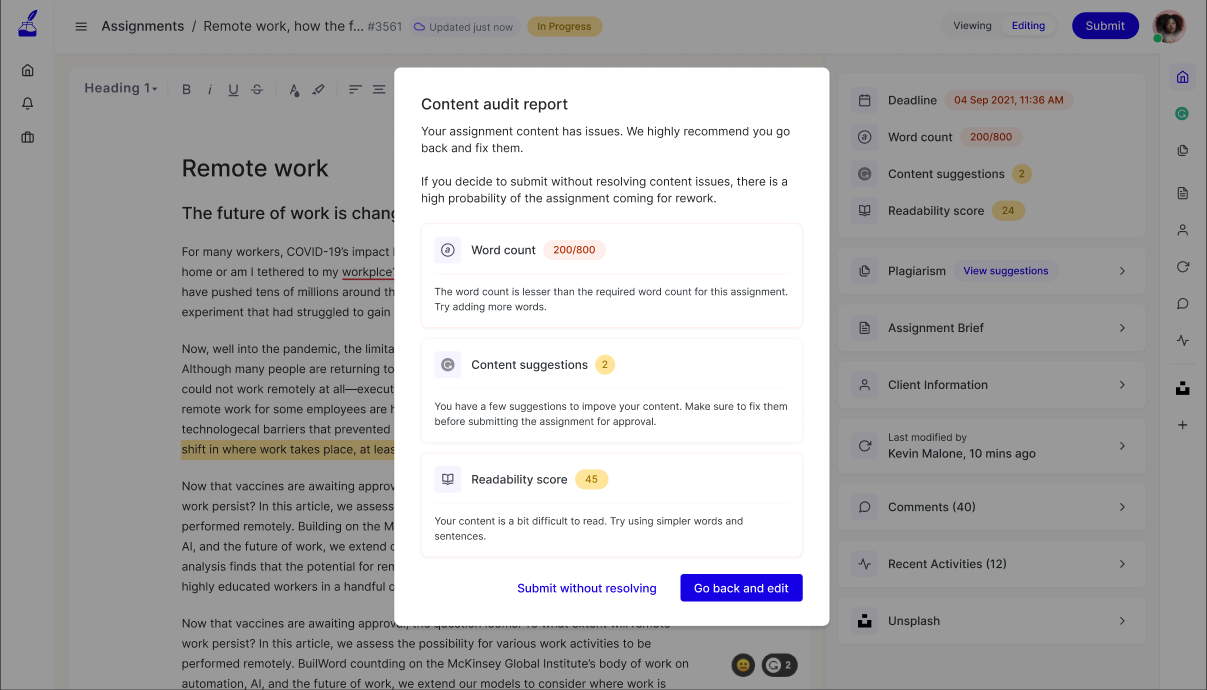
To achieve all of this, Pepper Content builds on top of a fine-tuned version of GPT-3. This tool (Peppertype) comes integrated directly into PepperDocs. Creators are able to leverage this to help summarise, rephrase, or elaborate upon ideas with the click of a button. It can provide blog outlines, suggest title ideas, product descriptions, social media copy, along with a menu of other nudges designed to give content marketers a head start. All in all, Pepper works very hard to make the creator experience as productive and enjoyable as possible.

Coming to the customer side of things, the CMP acts as a brand’s one-stop-shop to run their entire content marketing operation. Pepper breaks this operation down into four main phases or modules:
Strategy
Creation
Distribution
Analytics
In the strategy phase, customers can collate information pertaining to their brand/segment/industry and start to set goals. Let’s say you want to scale your content marketing activity for your spicy toothpaste brand, the CMP will help you look up keywords pertaining to competing companies, the business category at large, or complementary fields or queries.
For each of these keywords (which could even be phrases), the CMP will share detailed information pertaining to the historical search volumes of the keyword, the average cost to advertise around a given keyword, and the relative difficulty of obtaining a high-ranked search result for a keyword. This is done by combining data from sources like Semrush and Google along with Pepper’s own secret sauce. The CMP can even suggest content ideas based on things like your keyword portfolio or your domain name.


Once the customers have figured out their content strategy, they can move on to the creation phase. This phase begins with the selection of a content type. Popular content types include SEO-friendly blogs, in-depth blogs, and web-page translations. Each of these content types has its own creation questionnaire and delivery workflow.
In this questionnaire, clients note down all the key facts and figures that the creator should know. While the specifics of these questionnaires change, the idea is to give the creator as much colour on the brief as possible, including information about the client’s brand positioning and creative guidelines. Pepper encourages its customers to upload as much data as possible, including creative references, video explainers, and research reports which can help the creators better understand the project brief.

After completing the project brief, the customer selects the category of creator to work with: generic writers, advanced writers, or subject matter experts. They then complete their payment and begin interacting with the creator via the CMP’s inbuilt project management tools. These tools help streamline progress reporting, content feedback reviews and approvals, and communications between creators and customers (via annotations and comments on PepperDocs, and over live chat).
When the project has been completed to the clients’ satisfaction, the project moves into the distribution phase. Pepper’s idea here is to make it as easy as possible for companies to publish their content directly from within the CMP. This is made possible by integrations with social media platforms, Wordpress, and other Content Management Systems. Currently, much of the functionality of the distribution phase is still in development.
The final phase of the content marketing operation is the analytics phase. As you would expect, this consists of monitoring the published content pieces to see how they have performed and how they can be optimised in the future. Just like the distribution modules, the analytics modules of the CMP are still being built out.

Pepper Content expects to complete the development and full rollout of the CMP in the next two months. This represents the culmination of their long-time vision to build the “operating system of content”. Interestingly, one of the co-authors of this piece, Aaryaman, met the Pepper Content team in September 2019 to discuss investing in their pre-seed round. Unfortunately, the investment couldn’t be completed at that time, but Aaryaman recalls hearing Anirudh talk about building this OS for content even in 2019.

Back then, Pepper used to handle customer requirements using more rudimentary means. Client briefs would be recorded and matched with creators manually, and the actual projects would be created and discussed over Google Docs and email. Over time, Pepper built more and more of their own systems until they owned an increasing amount of the workflow.
With the launch of Peppertype in 2021, the company was able to gain valuable experience, feedback, and training data with which to improve their AI capabilities. This was a prescient exercise because all of the ML powered creator features in the CMP and PepperDocs are informed by learnings from launching and running Peppertype.
Finally, in 2023, Pepper is bringing everything together and delivering on its original vision to build the end-to-end content OS for the world. The Content Marketing Platform will become the one spot where brands can get their content marketing needs met, starting from ideation through to creation, distribution, and finally analytics and monitoring.
So…yeah, thats what Pepper Content actually does.
Cool that’s a pretty detailed and explicit description of what they do… But why are you so hyped about it? Is content really that important?
Anirudh puts it like this:
“Building a great product isn’t enough anymore. You need to find a way to make people care about what you’re doing. You need a great story in order to build trust with your customers and communicate what you do in a simple manner. You need to keep pressing your message again and again in different formats which helps to educate your users, drive awareness for your products, and convert your fans into customers. You need to treat content as a tenet of distribution that is embedded in all your digital marketing workflows.”
It isn’t enough to just exist online. To stay ahead of the game in the digital age companies need to balance the science of sales with the art of audience building. They need to figure out how to surf the currents between content and commerce.
And to illustrate the most iconic demonstration of this credo, we need to take a little detour back to the 19th century.
Ok, leggo.
In 1889, in the small town of Clermont-Ferrand in rural France, brothers Andre and Edouard Michelin would plant the seed for their eponymous tyre company, embarking on a gutsy entrepreneurial venture at a time when there were less than 3000 automobiles in the country.
As a way to make the lives of motorists easier and thereby increase the proclivity of people to get behind the wheels of a car (in turn increasing the sales of Michelin tyres), they created and distributed a little red handbook containing useful guidance for travellers. This included information around filling stations, local maps, instructions on how to change a tyre, listings of car mechanics etc.
In 1920, this handbook was given a makeover. It was relaunched as the MICHELIN Guide, now sold for seven francs per copy as opposed to being given away for free. The crucial difference between the old handbook and its revitalised avatar was the addition of restaurant listings organised by category. This was a game changer. It proved so immensely popular that the Michelin brothers even recruited an independent team of inspectors that would go around France reviewing restaurants for the Guide. By 1931, this exercise had morphed into the iconic three-tiered ‘Michelin Star’ system that still retains its gravitas in the restaurant industry almost a century later.
The Michelin Guide proved to be a stroke of marketing genius. Not only has Michelin sold over 30 million copies since inception, but the Guide successfully sparked a spirit of adventure amongst citizens in France (and eventually amongst those in 24 territories across three continents). It spurred people to get into their cars and drive in search of their next magical dining experience, thereby boosting the sales of Michelin tyres as a consequence.
Today the arrival of the Guide in a new city is considered a validation of its cultural relevance. Not only does it provide a boost to local tourism, but some estimates suggest that the presence of the Guide in a country means that its people are 3% more likely to buy Michelin tyres (and at a turnover of 24 billion euros, that is a huge difference maker).

It might seem odd that a brand of tyre-makers also moonlights as a bastion of cultural taste (literally). But the Michelin Guide is just one of the earliest examples of ‘content marketing’ done right. Michelin realised that an apparently orthogonal attempt at drawing attention for its restaurant listings could also boost its tyre sales and lend a halo of prestige to its parent brand. They succeeded in building an audience for a media property and leveraging that asset to help their business grow.
The modern version of this exercise includes everything from:
writing blogposts that are optimised to make it to the top of Google’s page ranks
producing a podcast for a specific sector that features industry thought leaders as guests
crafting a viral tweet to capitalise on a trending cultural event
making instructional videos on Youtube that depict the best ways to use your product
creating a weekly newsletter that educates people on the latest happenings in your field
the CEO of a company posting regularly on LinkedIn
case studies on how different clients have benefited from your product
Content marketing is an essential component of doing business in the attention economy. Merriam-Webster’s dictionary defines it as…just kidding, we’re not going to go there. Instead, when it comes to defining what content marketing is, to quote the immortal words of US Supreme Court Justice Potter Stewart when adjudicating on the description of hard-core pornography in 1964 - you’ll know it when you see it.

As opposed to performance marketing that is specifically designed to garner a certain number of clicks, or to generate leads, or increase sales by a certain percentage, content marketing isn’t as focused on quantifiable outputs. It is less transactional and more strategic in intent, more geared towards educating or entertaining consumers. Content allows companies to leverage different forms of media to craft a narrative around a brand, helping to keep it at the forefront of a consumer’s mind. It’s the kind of exercise that counts towards building trust and credibility with a set of users over a longer term.
Anirudh emphasised this point by citing a remark made by the Chief Marketing Officer of one of Pepper’s customers, who said that:
“Content marketing is like putting a dollar into a bank. Performance marketing is like lighting that dollar on fire”.
Lulu Cheng Meservey, the Chief Communications Officer and EVP of Corporate Affairs at Activision Blizzard, has a different way of articulating why it is so important for companies to mould their own narratives in the age of social media. She said on a recent podcast that:
“…I think about putting your message out as finding product-market fit, where your first product before your actual product is the story about your product...
…So your story about the product is your first product. You have to find product-market fit for that before people will be receptive to your actual product…”
Each piece of content you put out - every tweet, email, video, blogpost, podcast, ad, webinar etc - becomes a digital missionary for your brand, like a little agent in cyberspace that does your bidding. Getting good at content marketing expands your surface area for serendipity. It can be a cheat code for winning the favour of potential customers, partners, employees and investors, giving them different touch points to engage with your brand.

That makes sense at a high level, but how does it translate into an economic opportunity?
While researching this field, we were stunned to discover the amount of money that gets spent annually on content. Whereas the ‘content marketing’ industry is set to hit almost $6 bn over the next few years, the economic tentacles of content actually extend in more directions than you might realise. Here is a basic example - many films, YouTube videos, audiobooks, and podcasts require translation. Often into a variety of languages, both on the audio side and via subtitles. This is all content. A human being is needed for each of these tasks (for the time being at least 😅), and companies pay big money every year to get this done.
Consider the example of Cactus Communications, a content company based in Andheri, Mumbai. This company’s hero product is academic proofreading and translation. They help foreign researchers, scientists, and academics translate their work into English and publish it in the format most amenable to the leading industry journals like Science and Lancet (all of which are English-first). This might seem like a niche use case, but Cactus Communications reportedly brings in hundreds of crores of revenue each year, and you’ve likely never even heard of them.

India is well positioned to capture market share in this product category. Notwithstanding the huge number of domestic consumers with their diverse languages and dialects, we also have a huge number of fluent English speakers. This Anglophone ubiquity, combined with the relatively low labour costs in the country, makes India an ideal destination to outsource content work to.
Just look at Pepper itself - they have a customer who pays them upwards of $5m per year for producing content that helps keep its brand at the top of Google’s search rankings. For each big customer paying Pepper these large sums, there are hundreds of similar companies in markets around the world who have never heard of Pepper. Surely those companies would have the same desire to spread their brand and story across the Internet regardless of the language, script, or search engine used in that market.
This is probably a good time to expand upon the concept of a “market network” from the by-line of this piece. The concept of a market network was put forward by US VC firm NFX Ventures. It refers to a company that exhibits features of a two-sided marketplace, an identity-based social network, and a workflow-oriented SaaS tool all at once. According to the NFX thesis, these kinds of companies are best suited to tackling complex services such as angel investing, home improvement, or content creation. This is because unlike simple services such as taxi driving or food delivery, complex services rely much more on the individual market participants and their unique characteristics.
When executed well, a market network should be able to benefit from the transaction velocity of a traditional marketplace, the network effects of a social media network, and the stickiness of a SaaS tool company. Pepper Content is keenly aware of this thesis, and Anirudh recognises how potent this mix can be when done right.
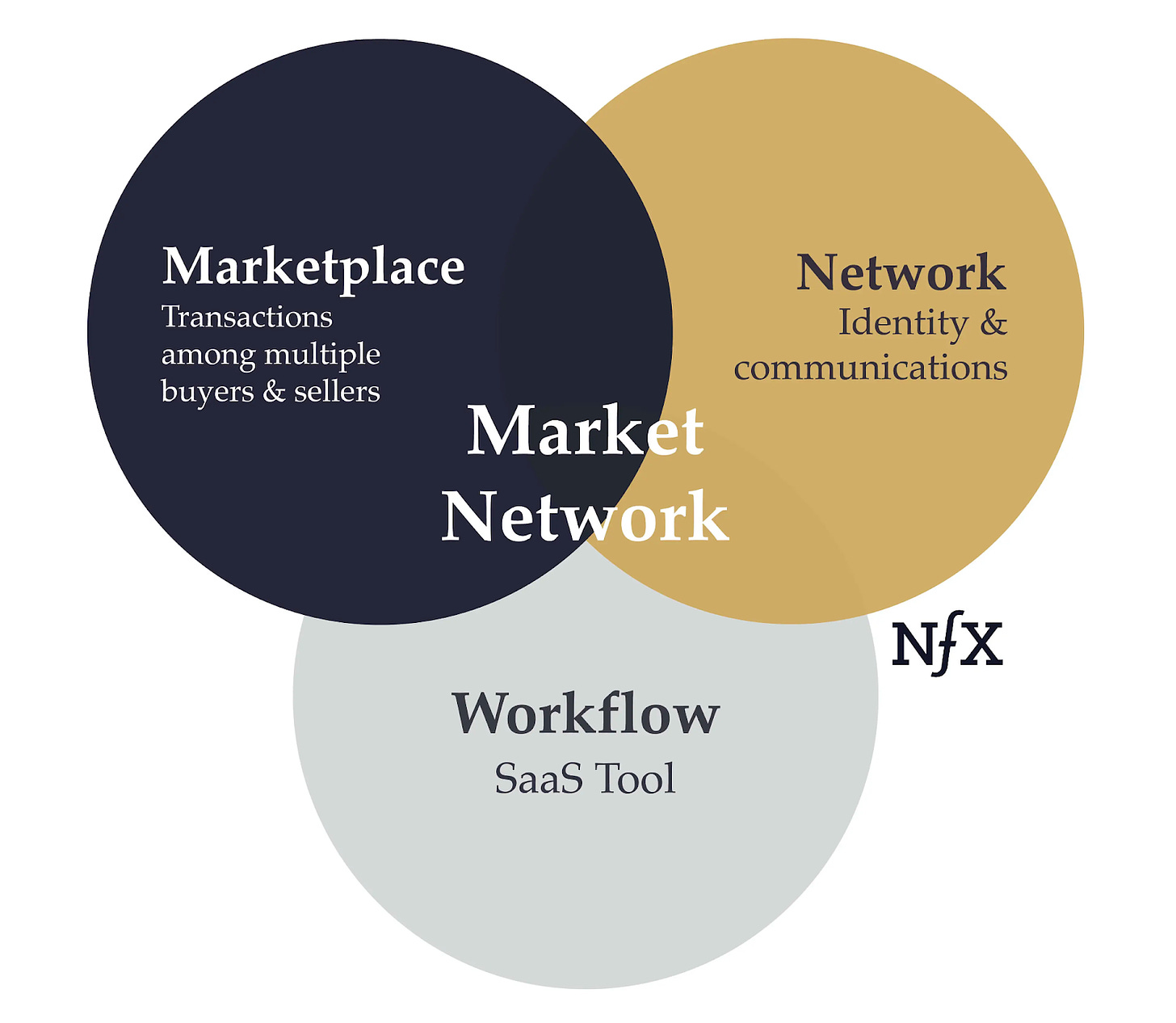
Pepper currently makes 85% of its revenue from fees on its marketplace, and 15% from subscribers for its AI tool (Peppertype). Once their consolidated CMP is ready for primetime, they foresee their creator marketplace providing a springboard for a sustained SaaS push. Between the increasing global spends in content marketing and the potential to rapidly scale a SaaS product that already has product-market fit, you begin to get a feel of how big their opportunity really is.
Nice. What happens when the machines get so good that humans aren’t needed at all?
That a good question. We don’t know what will happen when machines produce perfect content 100% of the time, but we are probably a long way away from that paradigm. For all their benefits, tools like ChatGPT still make a number of errors when it comes to facts and logic. They also lack contemporary and human context of pop culture and recent events.

In the future, machine outputs will be watermarked with statistical noise that flags the attention of AI-detectors. This will ostensibly violate Google’s policy to downgrade automated content in favour of organic, helpful, manually created content. So there are still a number of things that need to happen before humans’ roles in the creative process can be minimised, and we doubt that they will ever be eliminated from the process altogether.
Pepper Content knows this, and they take the view that machines should augment human effort rather than replace it. That’s why they take care to establish certain human checkpoints in the workflow, including reviews and discussion between clients and creators at regular intervals.
Thanks for the knowledge *high five*. It does feel like Pepper is one of those right-place right-time founder stories. No?
Kind of. For Pepper, they’ve been preaching the virtues of enterprise storytelling and content-led growth since 2017. Their objective is to eventually provide a full suite of content products on their marketplace (video editing, podcast production, technical whitepapers, product docs etc) in addition to the prose and SEO-dominated fare that’s currently on offer.
The founding team recognised that the demand for content would only increase as we burrowed further into the digital era. Pepper is also well placed to capitalise on a changing macro-economic environment where companies are pulling back on ad spends and prioritising sustainable unit economics as opposed to the freewheeling growth-at-all-costs approach that was a hallmark of the 2010s. Anirudh commented on this transition, telling us that:
“Even if you put the breaks on ads to cope with a conservative macro situation, you still need to be ‘out there’ if you want to generate revenue. Being 'out there’ basically means creating and publishing content - whether that’s posting on social media, creating blogposts, and whatever else you do to generate organic traffic. The misconception is that companies want to spend less, when in reality what they really want is to grow efficiently.
For instance, one of the largest ed-tech companies in India uses Pepper to generate 5000 articles per month. That kind of scale is very hard to reach. Ed-tech has had notoriously high Customer Acquisition Costs (CAC) in an era of easy money, and the whole sector is now looking for a more sustainable path forward. Content marketing allows them to do that. For one, creating content would cost them 1/5th of what they spend on advertising. And two, using Pepper means that they can be flexible with their marketing spend. They don’t need to hire a team of full time specialists - one technical writer, one SEO writer, one social media expert, one script writer etc. They can specify their requirement on our marketplace and we’ll do the rest.
For US companies as well, hiring a full time content marketing person in-house would cost them $80-120K per year. We can deliver 3x the value with our ‘Virtual On-Demand Talent’ approach. We even let companies use a credit-based pricing model where they can buy a certain number of credits on our platform for a certain period and then use these as per their specifications (different content types, different creators etc). They don’t need to hire ten different people. We take their request and match them with the best talent for each task, building a perfect virtual team that meets their marketing needs.
In this way we are an on-demand service for creators. And similar to the difference between Uber and conventional taxi companies, you can draw the same parallel between Pepper and conventional marketing agencies. We help dismantle local talent constraints and find the best person for the job wherever they are in the world. Unlike a typical agency, we don’t have the same fixed salary costs for our writers, designers etc. On the contrary, they are paid only for the projects they undertake, and we only make our fees when we can source new work for them. Our growth is not constrained by our headcount. Our software offering and talent network work in tandem to meet our customers’ needs.”
We actually spoke with the COO of one of India’s leading digital marketing agencies to get his views on Pepper as a competitor (because we take this journalism stuff seriously around these parts). Ironically, he cited the growing importance of content marketing to the health of modern businesses as something that might count against Pepper in the long run. He said that:
“Pepper is really good at what they do, and their approach works well for many companies. But for brands that want to closely control their narrative and those that find value in being more hands-on with their media operations, Pepper is too impersonal as a solution. You want to have your own in-house army that is committed to the cause, as opposed to having hired guns that aren’t personally invested in your success. Even for those that do outsource their content marketing, clients won’t always want to fill out a form on a website to state their requirements, they want to be able to call you a hundred times to make sure their work is being delivered properly.”
In any case, five years after launching with nothing but a spreadsheet in a dormroom, Pepper finds themselves being propelled forward by a squall of cooperative tailwinds.
“We’ve been lucky to repeatedly find ourselves a few steps ahead of several major trends. The gig economy helped people get used to the idea of part time ‘on demand’ work. The creator economy exposed the potential for talented people to build careers on the back of their individual passions. The pandemic normalised the concept of remote work. And now the recent wave of generative AI applications is helping expedite the work of creators. It’s giving amateurs and professionals access to robot assistants that have been trained using all the digital data in the world, encompassing the vast knowledge of mankind”.
You could call it luck. Or you could say this is a team that is extraordinarily savvy, with a keen sense of where the world is headed. The world, coincidentally, is where Pepper is headed next too. After fortifying their base in India, they’ve begun their voyage outwards.
“Our core marketplace is already seeing traction in the US, and we have big ambitions in the Western market in general, where the economics of using Pepper for content marketing should give us a huge advantage in winning contracts with startups and large enterprises alike. From a creator perspective too, last year saw a big shift. We now have 600-700 creators based in the US that are earning a living using Pepper. And we’ve started seeing interest from creators in the UK, Pakistan, Nepal, Cambodia, Philippines, Bangladesh, Germany, and other parts of Europe. Trust me when I say that Pepper is going to be a global company, not just an Indian one”.
For now, that claim seems tough to bet against.
Right, let’s wrap this baby up.
If you’ve followed this newsletter for the last couple of years, it should come as no surprise that we were drawn to the Pepper Content story. It has all the ingredients of a quintessential Tigerfeathers piece, and all the bits that make us proud to be part of the Indian startup ecosystem:
Inspiring founder journey ✅
Compelling business problem ✅
Ambitious, hungry team with an undeniable track record ✅
Opportunity to learn about cutting edge technology (i.e. AI) ✅
Indian roots with audacious global ambitions ✅
Willingness to let us invest in future funding rounds - TBD🤷♂️
The best startup founders tend to double as soothsayers in that they usually possess some secret window into the future. Six years ago Anirudh, Rishabh, and the Pepper founding team peered into this window and augured that content would become a strategic business asset, that creative people would want to carve out independent online careers, and that content marketing spends would keep rising as companies realised they needed to stand out in the attention economy.
“Content marketing was an under-appreciated business vertical. The process for making content was fragmented, and the industry had no clear leader. We didn’t really do any specific market sizing when we started. But the deeper we go, the more convinced we become. We saw that there was a Salesforce for Sales, a Hubspot for Inbound Marketing, but nothing for Content,” says Anirudh.
Pepper is in position to be that industry heavyweight, to be the first place you go to when you think of content - right from strategising to sourcing ideas to finding talent to executing a brief. If they succeed, they will be one of the biggest startups to come out of India. Simple.
“People today have a narrow view on content. They still think of it as just an Instagram post or a blog or a Youtube video. But along the way we’ve realised that this ‘content marketing’ industry has so many $100 million niches that people don’t even know exist. We’ve found massive economic pockets in areas like fiction writing, podcast transcription, video subtitling, audio localisation, translation of academic research…just think of the different types of content you consume. Can you imagine all the different workflows and personnel involved in making them? All these disparate components are often needed by the same customer. Right now nobody is attempting to bring these parts under one banner. That’s where we want to come in. That’s why the largest opportunity to expand and cross-sell across verticals is still ahead of us.”
At this point the numbers speak for themselves:
- 2 million pieces of content have been created by Pepper creators
- 120K businesses have signed up on the Pepper marketplace
- 400K users of Peppertype.ai from 160 countries
- 150K creators have applied to be part of the network
- 50 cr collectively earned by creators since inception
- ~$20 mn funding raised across three rounds
- 16x revenue growth last year on a healthy gross profit margin
- estimated $15-20 mn annual run rate in FY23
By all accounts the Pepper machine is in full throttle. When we asked the Pepper leadership team what keeps them up at night, they offered a rather thoughtful answer, remarking that:
“We know we have a massive opportunity in front of us and we must do justice to it. It’s on us to see how far we can take this ship. Our challenge is that we have an infinite number of routes to take and it isn’t always clear which is the best option. The journey is not just a linear path, it’s more like a triangle, or a rectangle, or even a cube. We have to be confident in how far or how deep to go in a certain direction to accomplish our mission”.
The next destination in their cuboid roadmap will see them test their thesis about the future of creative labour via the Pepper CMP, specifically to validate whether “the future is AI + talent, where the AI solves for quantity and the humans solve for quality”.
Ironically they will have to contend with a deeper set of competitors on the AI front (like Copy.ai, Jasper, Bearly.ai, Lex, OpenAI, and even Microsoft) than they’ve had to for their content marketplace. Most of these new AI products are being built on the same LLMs, which means the products themselves bear the risk of being commoditised. Pepper still has the complementary advantage of their core offering, so their foray into AI should pull more weight than a newer entrant that’s just trying to jump on the hype train.
In any case, it’s an interesting hypothesis and a compelling challenge - certainly one worth digging into further. But like we mentioned up top, this isn’t an AI piece.
This is the story of Pepper Content.
ACKNOWLEDGEMENTS
A big thank you to the Pepper Content team, particularly to Anirudh Singla and Himanshu Goyal, for taking the time out to speak with us and for being so generous with their insights. We’re grateful to them for trusting us with their story. We also owe Aafreen and Drishti from the Pepper team a debt of gratitude for guiding us through the beta version of CMP, and for being so patient with our stupid questions.
DISCLOSURES
We have no financial interests in Pepper Content. We just think stories like theirs deserve to be told, and we want to support the ambitions of Indian entrepreneurs that are doing cool things both at home and abroad.
If you made it all the way here and you thought this was a good use of your time, it would mean a lot to us if you took a couple of seconds to share this post -
Tigerfeathers is a newsletter by Aaryaman Vir and Rahul Sanghi. Our goal is to spotlight the people, products and ideas that will define the future of Indian tech.







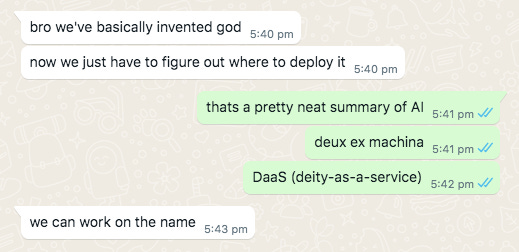




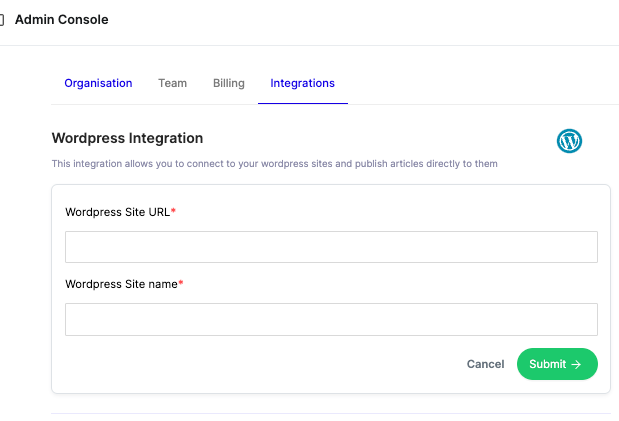
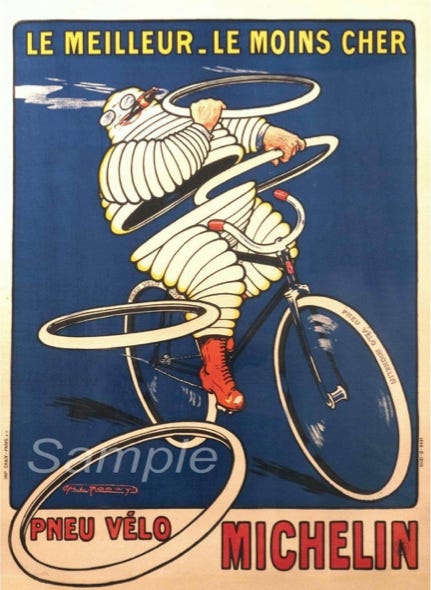
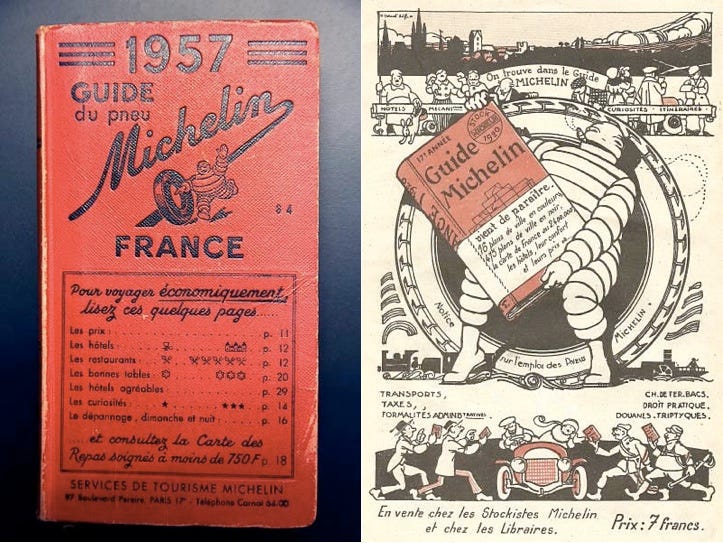


Before going wide on other forms of content like audio or video, I would prefer that they go deep on text. In particular they must try to extend these features beyond english, Indian diversity could lend them an enriching experience before targeting other geographies.
As always, deeply insightful. I loved the midjourney graphics : )